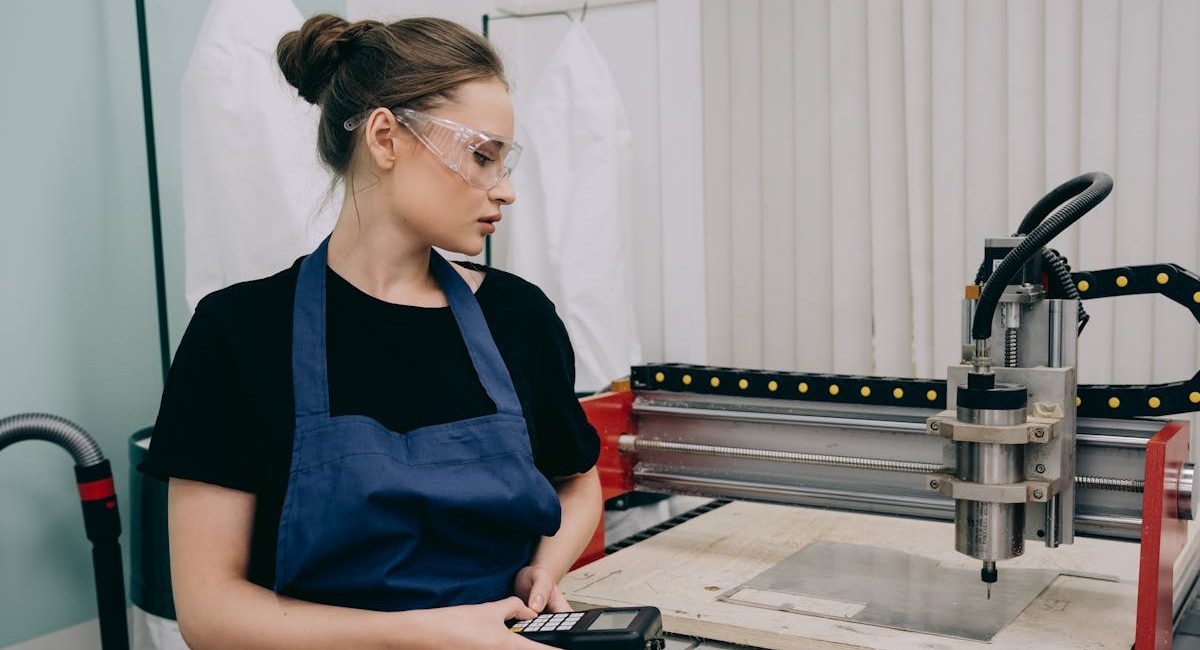In the fast-paced world of automation, precision, speed, and efficiency are paramount. As industries continue to push the boundaries of productivity, new technologies are continuously reshaping manufacturing processes. One such game-changer is the vibratory bowl feeder. Although it may seem like a humble piece of machinery, the vibratory bowl feeder has become a cornerstone in automating the manufacturing sector, transforming how parts are handled, sorted, and fed into production lines. RNA bowls feed and orientate your products carefully, at the same time guaranteeing a consistent and accurate flow of components into your production machinery.
The Role of Vibratory Bowl Feeders in Manufacturing Automation
Vibratory bowl feeders are mechanical devices used to feed small parts, such as screws, nuts, washers, and even medical components, into production lines in a systematic, controlled manner. These feeders use vibrations to orient and move parts along a track to ensure they are in the correct position for the next phase of assembly or processing. Typically, they are used in industries ranging from automotive to pharmaceuticals, electronics, and consumer goods.
The reason vibratory bowl feeders are so crucial to automation is their ability to operate autonomously, saving time and reducing the need for manual labor. This ability to feed parts without human intervention allows manufacturers to focus on other aspects of production while maintaining high throughput and consistent quality.
Key Benefits Driving the Revolution
- Increased Efficiency and Speed
One of the biggest advantages of vibratory bowl feeders is their speed. Unlike manual sorting or feeding systems, vibratory feeders can process a large volume of parts in a short period, significantly boosting the efficiency of assembly lines. Parts can be sorted and fed into the line continuously, without pauses, ensuring that production doesn’t slow down. The precise vibration control ensures a steady and uniform flow, which is critical in high-speed production environments. - Enhanced Precision and Accuracy
Vibratory bowl feeders can orient and position parts with great accuracy, ensuring that each part is in the correct orientation before entering the assembly line. This precision is essential, especially when dealing with small or complex components that require specific handling to avoid misalignment or damage. This level of accuracy reduces the risk of defects and enhances the overall quality of the finished product. - Reduced Labor Costs
Automation is all about reducing the reliance on human labor, and vibratory bowl feeders excel in this area. Since they can operate autonomously, they reduce the need for workers to manually sort and feed parts. This not only saves time but also reduces the potential for human error, improving overall production reliability. - Versatility and Adaptability
Vibratory bowl feeders are incredibly versatile. They can handle a wide variety of parts, from simple to highly complex shapes. Their adaptability allows manufacturers to customise feeders to suit specific needs, whether it’s a particular part size, shape, or material. As industries evolve and product designs change, vibratory feeders can be easily modified to accommodate new requirements. - Improved Safety
By automating the feeding process, vibratory bowl feeders reduce the need for human workers to be in close proximity to moving parts, which can be hazardous. Additionally, modern vibratory feeders are designed with safety features such as enclosures and guards to protect workers, further minimising the risk of accidents. - Reduction in Downtime
With fewer interruptions in the feeding process, vibratory bowl feeders minimise downtime, keeping production lines running smoothly. Their consistent operation ensures that parts are always fed in the right quantity and at the right time, reducing the likelihood of delays that can occur when parts are not available or when manual handling is slow.
Applications Across Industries
- Automotive Industry
In automotive manufacturing, vibratory bowl feeders are used to handle and feed parts like nuts, bolts, and washers into assembly lines. Given the high demand for precision and speed in automotive production, vibratory feeders play a vital role in ensuring that parts are available for assembly at the right time and in the right orientation. - Electronics Manufacturing
For electronics, where small and delicate components like resistors, capacitors, and microchips are used, vibratory feeders help automate the handling and sorting of these tiny components. The risk of damage to sensitive parts is reduced, and the feeding process is accurate, which is crucial for maintaining the integrity of electronic devices. - Pharmaceutical Industry
Vibratory bowl feeders are also revolutionising the pharmaceutical sector, where they are used to feed pill bottles, tablets, and even small vials into packaging lines. The feeders ensure the proper orientation of each part, ensuring that medicines and medical devices are correctly assembled, packaged, and labeled. - Food Processing and Packaging
In the food industry, vibratory feeders are used to move ingredients like nuts, seeds, or pieces of candy into packaging machines. The gentle handling ensures that delicate products aren’t damaged during the feeding process, while the consistent flow increases overall productivity.
Vibratory bowl feeders may not always steal the spotlight, but they are undeniably revolutionising the manufacturing world. As industries continue to embrace automation, the importance of efficient, reliable, and adaptable feeding systems cannot be overstated. Vibratory feeders enable higher speeds, precision, and consistency, all while reducing labour costs and downtime. By enhancing the overall efficiency of production lines, they play a crucial role in helping manufacturers meet the demands of today’s competitive and fast-paced markets.
Also Read: Why Is Production Planning Needed for Small Manufacturing Companies?
As we move further into the future, vibratory bowl feeders will only continue to evolve, driving even more profound changes in the automation landscape. For any manufacturer looking to streamline operations, adopting vibratory feeding technology may just be the key to staying ahead in the game.










